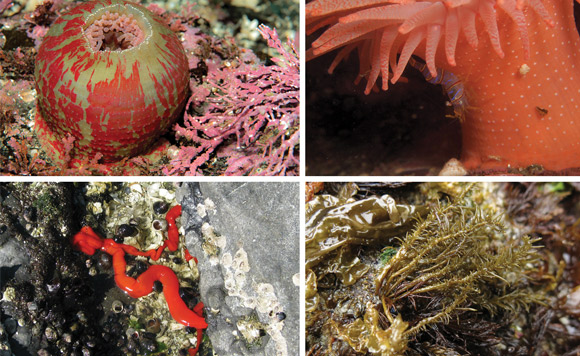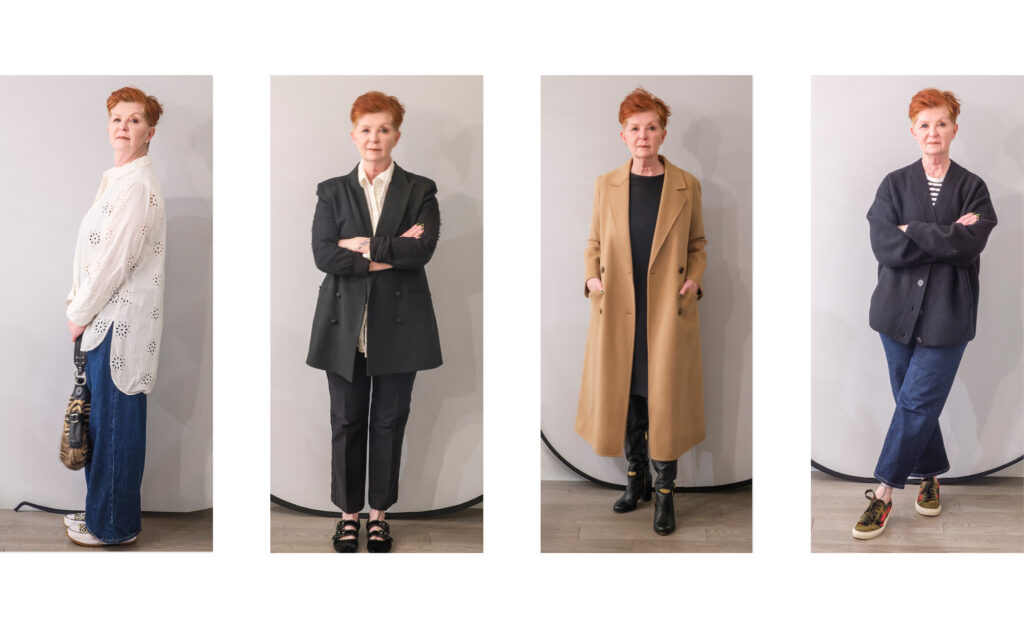– by Tina Kelly –
If you don’t think the sea can be festive, think again. Common names for some local species embrace vocabulary typically associated with the upcoming season. Mother Nature’s marine “decorations” reflect Christmas colours, winter weather and holiday treats, trees and wrapping.
Marine Snow: In the poorly lit twilight zone of the ocean – 201 metres to 1,005 metres – marine snow gently falls. Organic material comprised of dead plant and animal plankton along with animal poop, sand and other inorganic materials continuously sinks to the bottom of the ocean. Carbon and nitrogen components of the snow are important nutrients feeding deep sea creatures, many of them scavengers.
Christmas anemone: This large (30-centimetre) anemone is sometimes called the dahlia, mottled or painted anemone, but as the “paint” colours are often vibrant red and green, the most appropriate common name – this time of year – is the Christmas anemone, urticina crassicornis. This festive anemone is common on rocks and docks intertidal and subtidal zones.
Candy stripe shrimp: Commensally living with the crimson anemone – and occasionally the Christmas anemone – is the candy stripe shrimp, lebbeus grandimannus. Immune to the anemone’s sting, this colourful shrimp shelters under the anemone and benefits from food scraps found around the anemone’s base.
Ribbon worm nemerteans, or ribbon worms, are long, ribbon-like, smooth worms that vary in size and colour. The longest species in the world tops out at more than 30 metres and the smallest is less than a centimetre, while the colour ranges the full extent of the spectrum. One of our 87 coastal British Columbia species is the perfect shade for the season – bright red!
Fir needle algae: Common names for analipus japonicus include fir needle, fir branch and sea fir. These names conjure up clear images of its appearance. This mid- to low-intertidal seaweed attaches to rocks along the coast from California to Alaska as well as in Russia, Korea and Japan. In Japan, it is a food source.
Jingle Shell: The two round shells of the green false–jingle grow flat to the contour of a rocky surface. One of the shells is solid and the second has a pear-shaped hole; the sound these shells made when strung together into a necklace determined the jingle name. The inside of the jingle is smooth and iridescent.
This season, whether you’re diving, beachcombing or exploring at the Shaw Ocean Discovery Centre, take a moment to stop and enjoy the festive species around you. Happy Holidays and Merry Fishmas from all of us at the Shaw Ocean Discovery Centre.
Photo Credit (clockwise from top left): Christmas anemone, candy stripe shrimp, Jackie Hildering (TheMarineDetective.ca); fir needle algae, Jenn Burt; ribbon worm, Tina Kelly.




